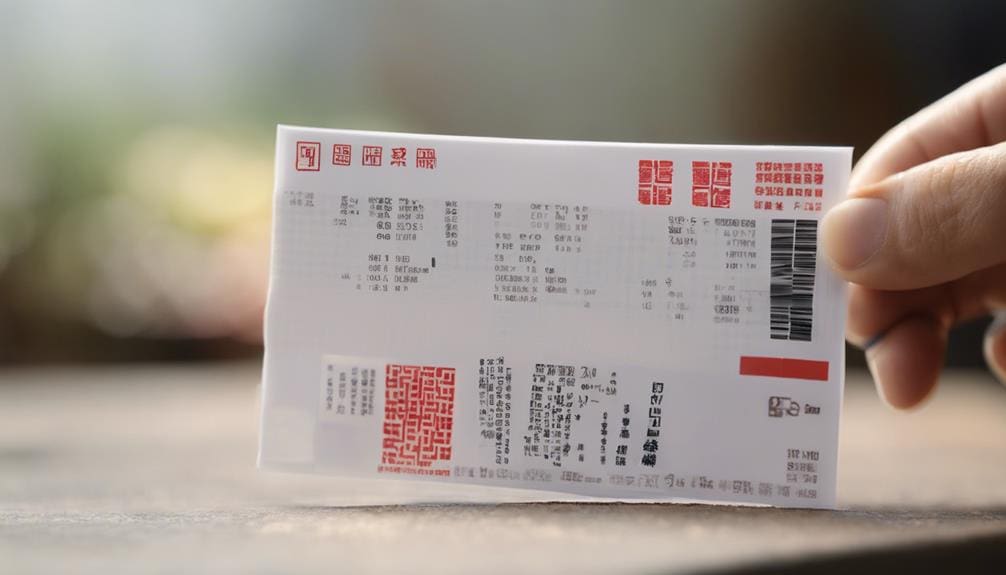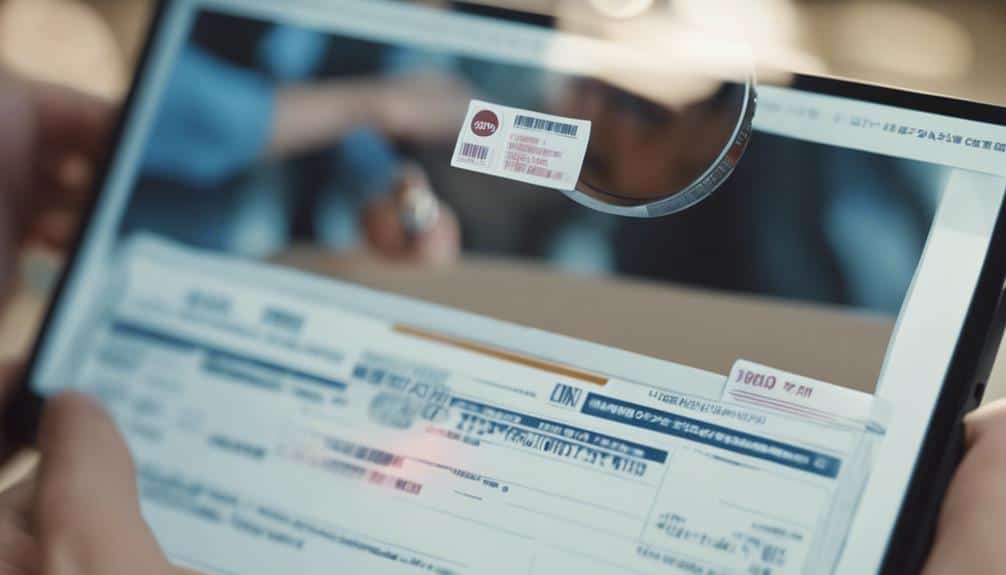Fake China Post tracking numbers can lead to complications in shipping. Genuine numbers are 13 digits starting with EA, EB, EC, EE, RA, RB, or RC and ending with CN. Deviations like short sequences raise suspicion. Use 17Track, ParcelsApp, or Postal Ninja for confirmation. Delays or quick deliveries may indicate fraud. Monitor transit times meticulously. If in doubt, contact local postal services. Dispute and provide evidence if fraud is confirmed. Prioritize reputable sellers for authentic tracking. Understanding these key points can help safeguard against counterfeit tracking issues.
Key Takeaways
- Verify China Post tracking numbers: 13 digits, start EA, EB, EC, EE, RA, RB, RC, end CN.
- Use 17Track, ParcelsApp, Postal Ninja for cross-verification.
- Monitor delivery timelines closely for unusual delays or quick deliveries.
- Contact local postal service for verification if suspicions arise.
Identifying Fake Tracking Numbers
When verifying the authenticity of China Post tracking numbers, it is imperative to meticulously examine their structure and format to discern potential fraudulent activity.
Genuine tracking numbers from China Post typically consist of 13 digits and commence with specific letters like EA, EB, EC, EE, RA, RB, or RC, concluding with CN. Any deviation from this standard format, such as unusually short sequences or incorrect initial and final characters, should raise suspicion of fake tracking.
Spotting discrepancies in the format is essential to identifying potential fraud, ensuring that further actions are taken cautiously. As a result, always verify the format of China Post tracking numbers before proceeding, as fake tracking numbers may lead to various complications and risks in the shipping process.
Cross-Verification of Tracking
To enhance tracking reliability and mitigate potential fraud risks, employing multiple tracking platforms for cross-verification is essential in the shipping process.
Utilizing platforms such as 17Track, ParcelsApp, and Postal Ninja can help confirm the validity of tracking information provided. Discrepancies in tracking updates or the absence of records across various sites may indicate red flags for potential fraud.
By cross-referencing information from different platforms, inconsistencies can be identified, and the overall reliability of the tracking data can be increased. Relying solely on the China Post website for tracking updates may not provide a thorough view of the shipment's status.
Consequently, incorporating multiple tracking platforms into the verification process can offer a more robust approach to tracking accuracy.
Analyzing Delivery Timelines

Analyzing delivery timelines involves evaluating the duration of transit for parcels based on their type and the expected timeframe for shipments between specific locations.
Realistic shipping expectations vary depending on the type of parcel being sent. For instance, a typical delivery from Beijing to New York usually takes around 15-25 days.
Any unusually quick delivery, such as a parcel arriving within just 2 days, should raise suspicions of potential fraud. Conversely, delays beyond the expected timelines may also indicate underlying issues with the shipment.
It is essential to monitor the progress of your shipment closely to identify any unusual delivery patterns that deviate greatly from standard shipping expectations.
Taking Action
Upon observing discrepancies in delivery timelines that raise suspicions of potential fraud, the next step involves taking decisive action to address the situation effectively.
If doubts persist after cross-verifying tracking information, contacting the local postal service for verification is advisable.
In cases of confirmed fraud, initiating a dispute on the sales platform, such as AliExpress or eBay, is vital.
When filing a dispute, providing evidence, like screenshots of invalid tracking numbers, is essential for a successful resolution.
It's also prudent to be cautious of sellers offering new tracking numbers post-dispute, as this could indicate further fraudulent activity.
If necessary, requesting a chargeback from the credit card provider can serve as a final recourse in resolving the issue in accordance with shipping policies.
Prevention Tips

When aiming to prevent potential issues with tracking numbers, it is imperative to carefully select reputable sellers with established positive feedback.
Seller reputation plays a vital role in ensuring the authenticity of tracking information provided. Established sellers are more likely to utilize accurate tracking technology and provide legitimate tracking numbers.
By choosing sellers with positive reviews, buyers can reduce the risk of encountering fake tracking numbers or fraudulent practices. Additionally, verifying the seller's track record regarding tracking accuracy can help buyers make informed decisions and avoid falling victim to scams.
Prioritizing seller reputation and tracking technology can greatly enhance the overall tracking experience and minimize the chances of encountering counterfeit tracking information.
Conclusion
In summary, the prevalence of counterfeit tracking numbers, particularly from China Post, presents a significant risk to online shoppers.
By identifying fake tracking numbers, cross-verifying tracking information, and analyzing delivery timelines, individuals can protect themselves from falling victim to fraudulent activities.
One interesting statistic to note is that according to a recent study, approximately 20% of online shoppers have encountered counterfeit tracking numbers, emphasizing the importance of vigilance and proactive measures in safeguarding against potential scams.

Oliver Postman was born and raised in a small town in the Midwest, where his fascination with postage began at an early age. At just six years old, he stumbled upon a box of old stamps in his grandfather’s attic, igniting a passion that would shape his life.
